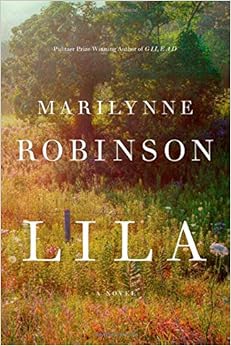"Pity us, yes, but we are brave, she thought, and wild, more life in us than we can bear, the fire infolding itself in us."
I wasn't looking forward too much to
Lila, even though I like Marilynne Robinson. But I knew it was another take on the Gilead people and my favorite of her books is
Housekeeping. It turns out, though, that
Lila is
Housekeeping meets
Gilead--the old preacher in Gilead marries the Sylvie character (not really, but sort of). I never would have believed that Robinson could have pulled it off. The old preacher in Gilead is so old and kind and good and Sylvie (Lila) is crazy--a lonely, wandering woman who talks to herself and who wonders often if she is crazy, and who is almost certainly perceived as crazy by people around her (crazy is her word, not mine).
While
Housekeeping is an interpretation of the Book of Ruth,
Lila is Hosea (even though Lila meditates on Ezekiel throughout the novel, with bits of Job and the Psalms thrown in): the old preacher is like the prophet who God tells to marry the prostitute. It is a picture of God's grace and love.
I feel similarly about
Lila as I did about
Gilead: I don't like Calvinism much at all, but these works are such winsome, Christian portrayals of Calvinism that I almost see how someone could buy it.
Also: it's obvious that there has to be a Lila, Part 2--because Lila, Part 1, doesn't get into the story of her ending up with Jack.
Oh, and of course, I love the parts of her being pregnant and a mother.












































